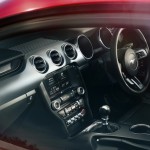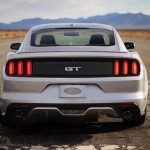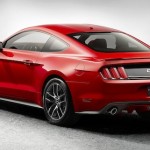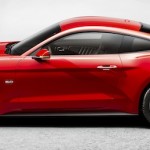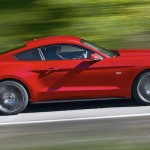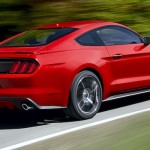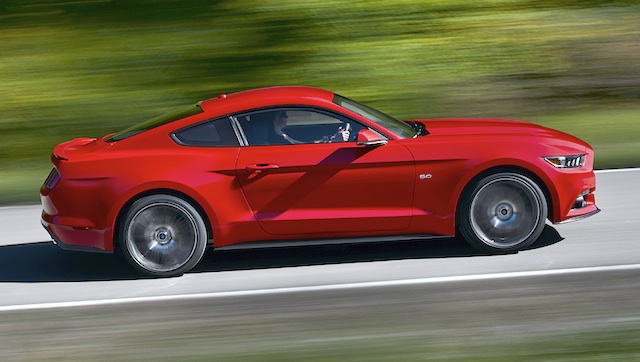
The car described as the “ heart and soul of Ford” will go on sale in New Zealand in 2015 with a badge of a galloping pony logo on the instrument panel and the words “Mustang – Since 1964.”
It will be the first time in Mustang’s 50 years that the two-door has been available from the factory in the United States in both left- and right-hand drive.

Ford NZ managing director Corey Holter isn’t saying exactly when the two-door will go on sale here. Asked if it would be late in 2015, he said: “I didn’t say late.” No word on price either, not until about two months before launch.
But Australian media at the launch in Sydney expect a late start in 2015 – and New Zealand is taking the same two engine packages as the Australians.
Ford unveiled the sixth-generation Mustang coupe and convertible simultaneously in six cities, hooking up global telecasts in a calculated bonanza timed to showcase the carmaker’s plans for its most idolised car.
Mustang’s impact goes well beyond the 9 million-plus cars sold in 50 years of production, says Ford. It has made thousands of appearances in film, television, music and video games, and is the world’s most-liked vehicle on Facebook.
There are a number of firsts for the new car, other than right-hook production. The most notable is its independent rear suspension in place of the current model’s live axle.
Ford has persisted with the live set-up since day one in 1964, one reason being that it suits grassroots straight-line drag racing in the US.
Ford says the springs, dampers and bushings in the independent set-up have been tuned for high-performance application. New aluminum rear knuckles help reduce unsprung mass for improved ride and handling.
Up front, is a MacPherson strut system. It’s helped by a new subframe that stiffens the structure while reducing mass, improving handling, steering and ride.
The new double-ball-joint front also enables the use of larger, more powerful brakes. This is expected to be the best stopping Mustang yet, with three available brake packages.
The Mustang also gets a torque vectoring system that adjusts torque delivery to each wheel; the GT variant adds a track-friendly launch control system.
Three engine packages will be available – 5.0-litre V8, 3.7-litre V6, and 2.3-litre Ecoboost direct-injection four-cylinder – although Ford NZ and Australia will take only the V8 and the four-pot.
The Mustang GT gets the upgraded 5.0-litre V8 that delivers more than 313kW and 529Nm of torque (US spec). A new intake manifold improves low-speed breathing for better fuel economy, idle stability and emissions, says Ford.
The EcoBoost engine uses variable cam timing and turbocharging to deliver around 227kW and 407Nm of torque (US spec), compared with V6 output of 220kW and 366Nm.
The new Mustang was designed by a team led by J Mays. It is his swansong – he is about to retire after 16 years as design chief at Ford.
Both soft-top and coupe Mustangs retain the traditional design elements of a long sculptured bonnet and short rear deck but have a lower and wider stance than the outgoing cars, which adds up to more hip and shoulder room in the cabin.
The windscreen and rear glass are more steeply sloped. The rear gets ‘tri-bar’ tail-lights with sequential indicator, and the front a revised version of the familiar Ford shark-nose fascia and trapezoidal grille.
Mays said the droptop model was designed right alongside the hardtop, since it was important to create a profile from essential Mustang elements that would work on both bodystyles.
Designing it for the global market, he said, wasn’t a major factor in creating the shape of the car – it was more important to first get the look right.
“It’s drop-dead gorgeous and there’s 50 years of pent-up demand. If it doesn’t sell itself, you probably aren’t a Mustang fan.”
** Check out the latest Ford of Europe TV ad for new Mustang
** Have a look at the Ford chief William Ford Jnr and his executives talk about new Mustang

